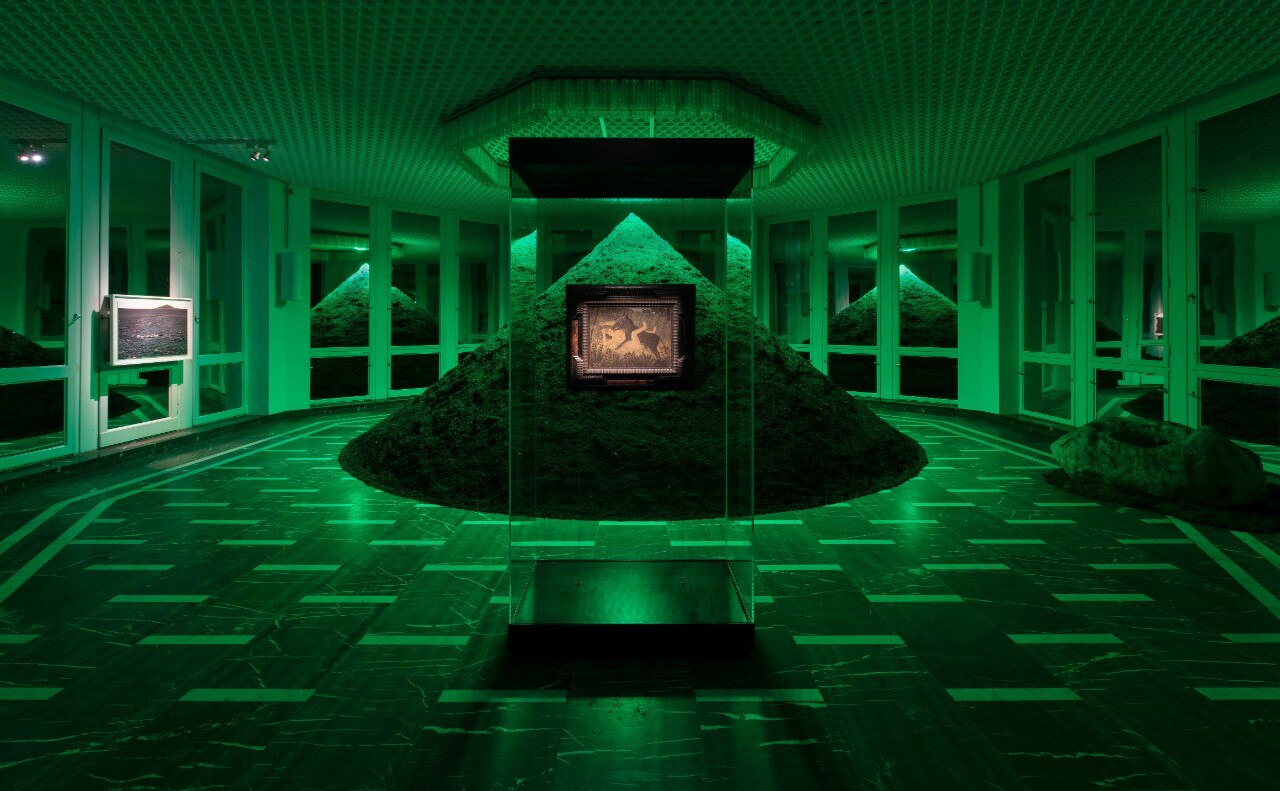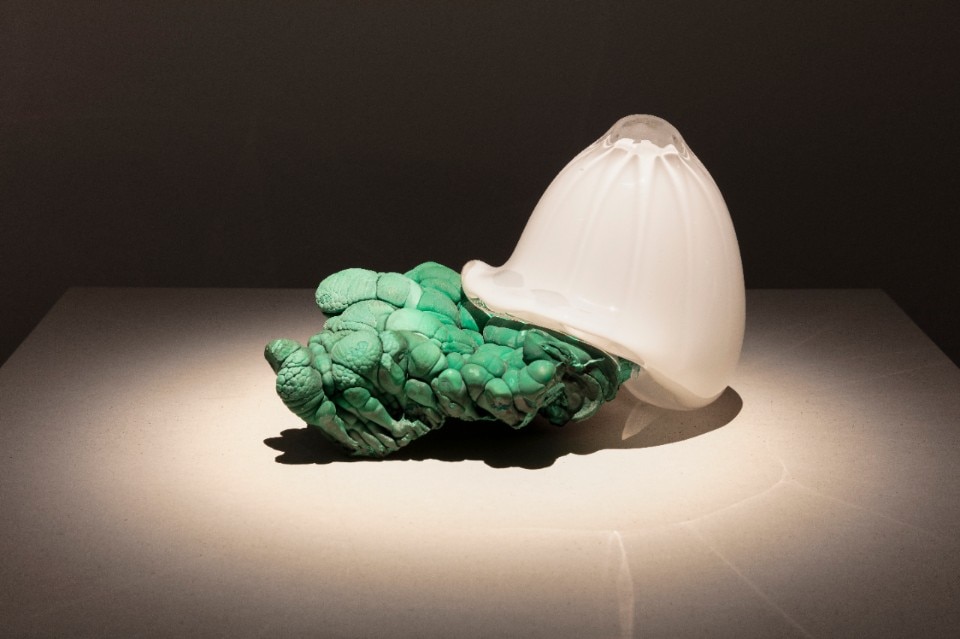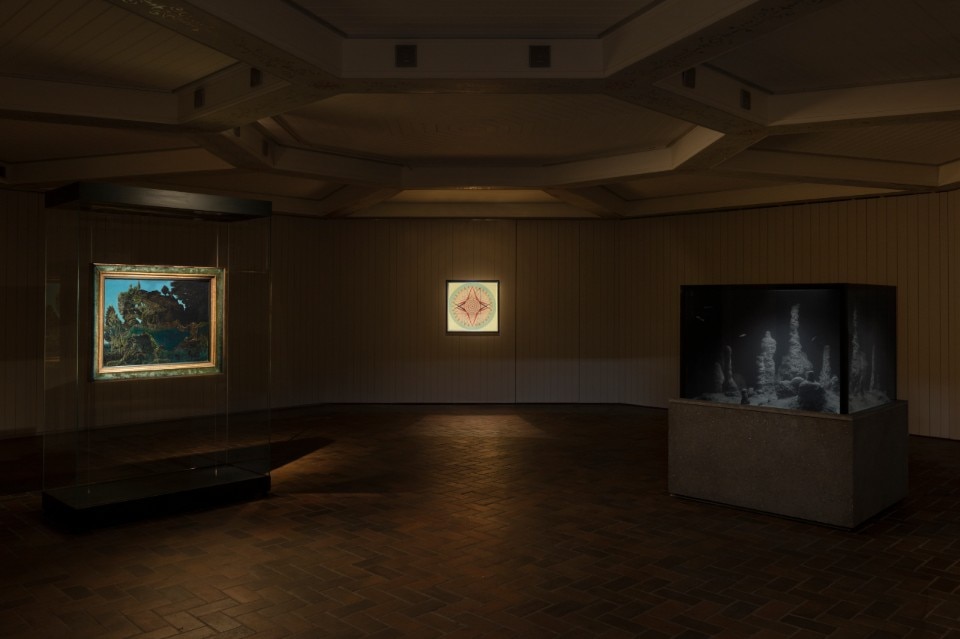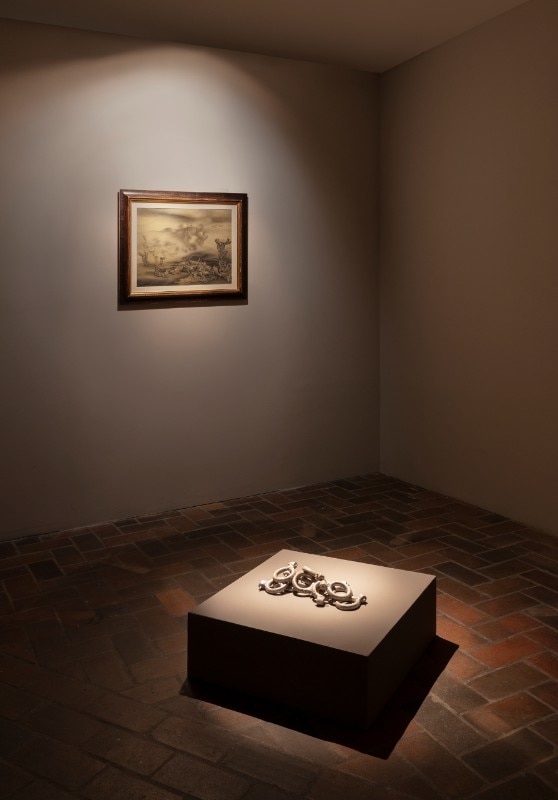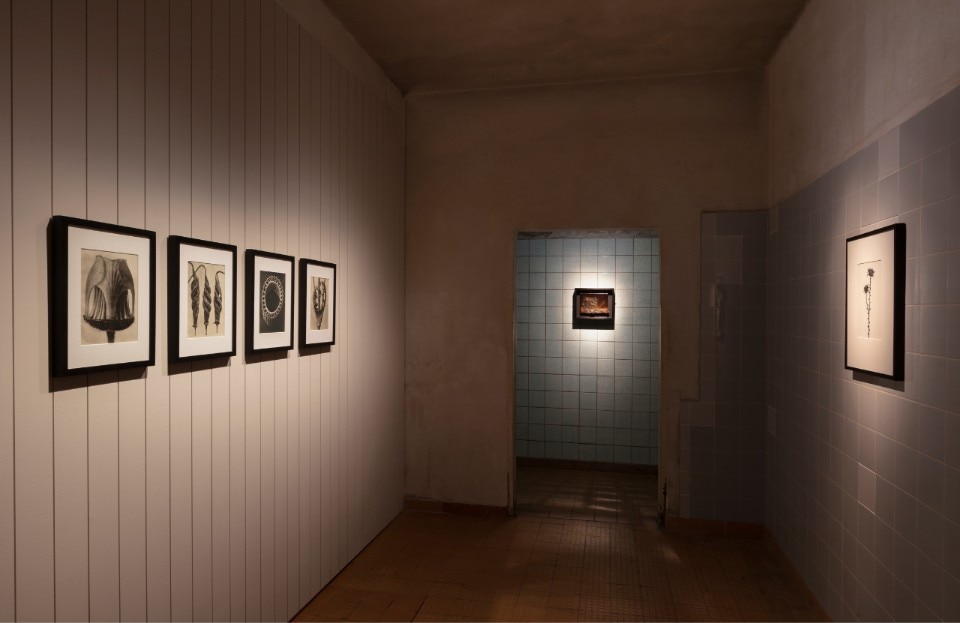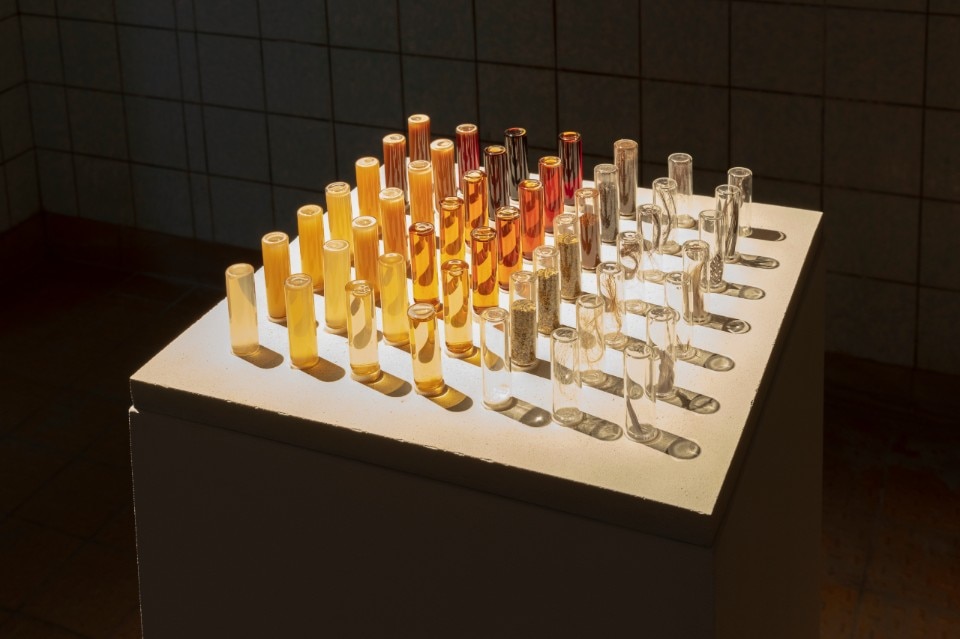“SUN RISE | SUN SET” is a visionary, intergenerational exhibition project curated by Nina Pohl and Agnes Gryczkowska. It will be on display at the Schinkel Pavilion in Berlin until July 25, 2021.
The exhibition addresses issues such as climate emergency and the ecosystem in a unique way, through the juxtaposition of contemporary works and masterpieces from the 19th and 20th centuries. Works by Max Ernst and Henri Rousseau coexist with visionary technological installations and soundscapes by Ryūichi Sakamoto.
“SUN RISE | SUN SET” is a journey through surreal landscapes and futuristic scenarios, expressing a need: to redefine the role of human beings in relation to nature and to support a hybridisation of forms that refers to the notions of circular and multi-species systems. The exhibition becomes a machine of desire stretching towards unknown ecosystems and timelines, to celebrate alternative future scenarios.
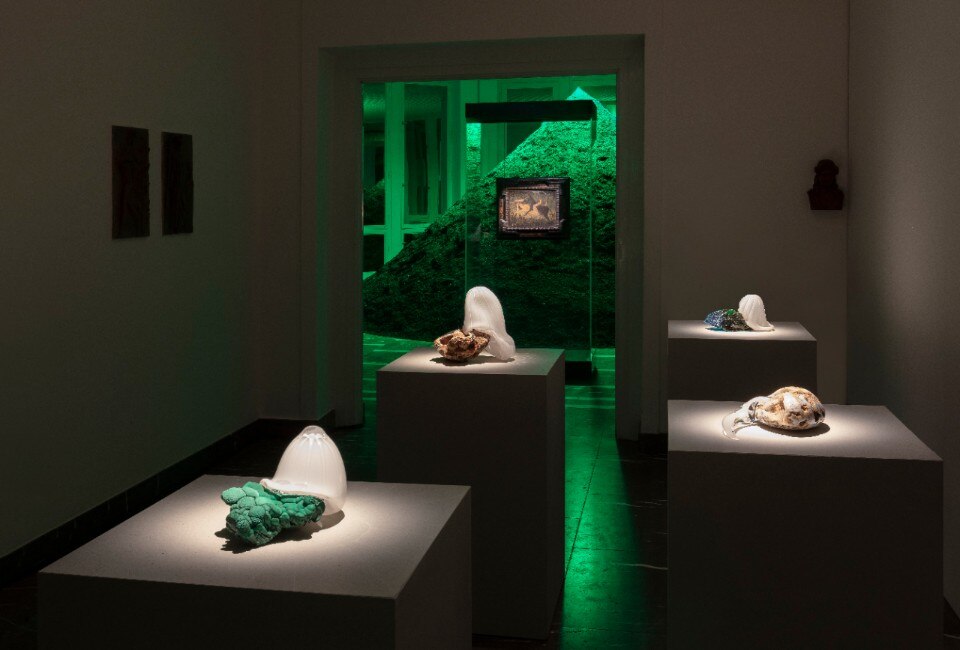
Max Ernst's iconic landscape Swampangel (1940) and Pierre Huyghe's biotechnological Circadian Dilemma (Dia del Ojo) (2017) give rise to a living organism in which flora, fauna, humans and technology coexist. The interaction between the luminous green earth of Pamela Rosenkranz's work Infection (Calvin Klein Obsession for Men) (2021) and Henri Rousseau's masterpiece La Belle et la Bête (ca. 1908) attests to the symbiotic yet destructive interdependence between man and environment, civilisation and wild nature.
The Schinkel Pavilion is a leading institution for contemporary arts in Berlin. An eccentric example of DDR architecture, the building was built in 1969 by architect Richard Paulick. Today, it provides the perfect setting for what can fairly be described as a multi-sensory experience.
“SUN RISE | SUN SET” testifies to a unique approach to curating that characterises the work of Nina Pohl, who talked to us about the project.
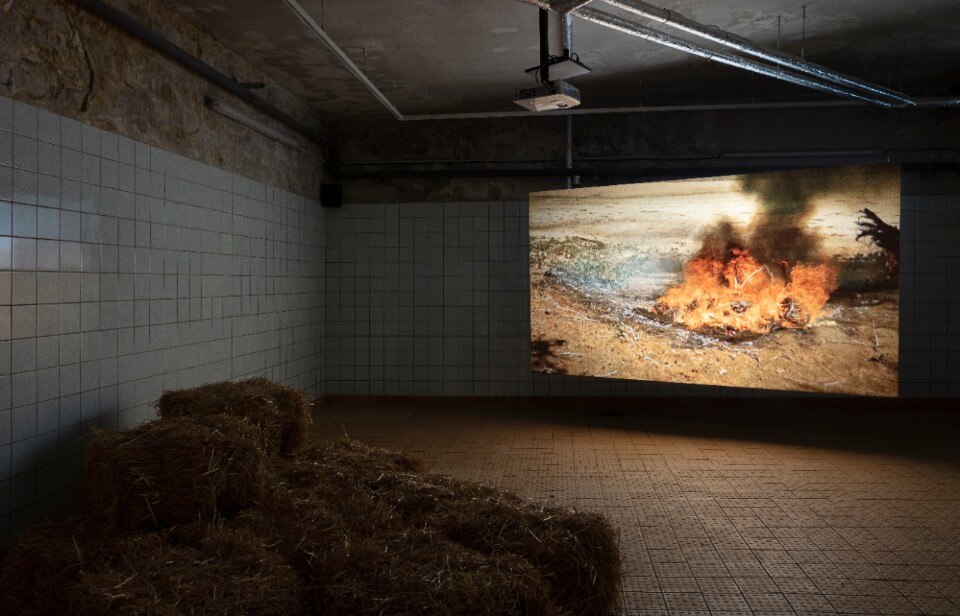
Why the title SUN RISE | SUN SET?
The rising and the setting of the sun alludes to a dual, threshold state between darkness and brightness, possible ecological catastrophes, and the potential of a new recuperative beginning. Meanwhile, the motif of the circle refers to a cyclical becoming and perishing by which all forms of life are determined, interdependent and equalized.
The exhibition juxtaposes works by contemporary artists with masterpieces from the 19th and 20th centuries by personalities such as Max Ernst and Henri Rousseau. How does this combination contribute to the discourse on the ecosystem and the environment?
The exhibition is dedicated to a presence significantly shaped and disrupted by the ecological crisis. The process of highlighting the interplay between the selected contemporary and historic works, forming small ‘organisms’, creates a reciprocal permeation of the works: They permeate through one another in a conceptual and aesthetical symbiotic way, yet at times destructive. Both Henri Rousseau and Pamela Rosenkranz make tangible the fragile relationship between humans and nature that finds itself on the edge of symbiosis and destruction.
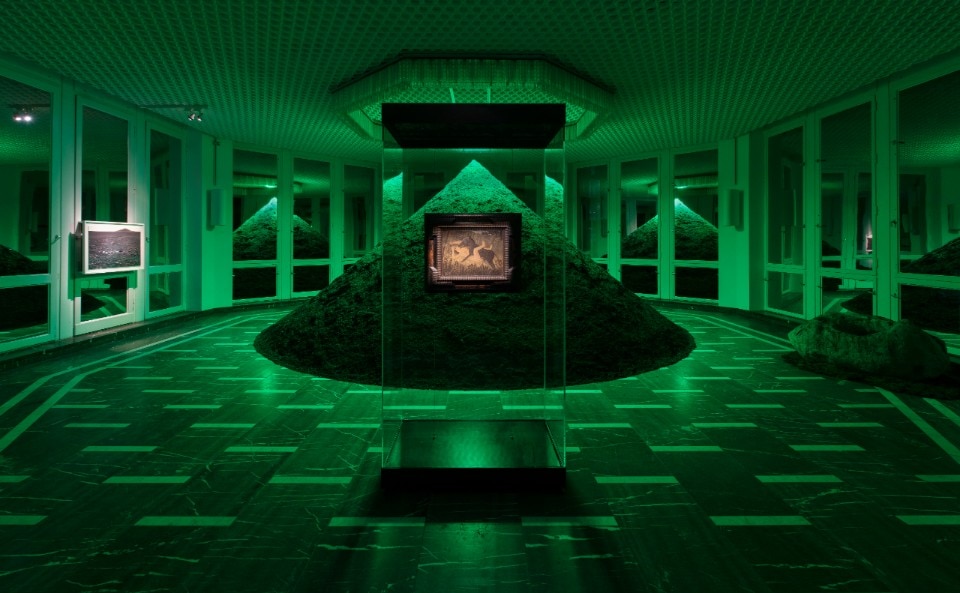
From a curatorial perspective, do you believe that historicized works can take on new, topical meanings when placed side by side with contemporary works, and vice versa? What kind of relationship is established?
They certainly can. In "SUN RISE | SUN SET", works from different decades and centuries are brought together to depict their unique and time-specific notion of the relationships between the human to the non-human. The interplay among the works provide a deeper understanding of the historically grown entanglement of the relationship between the dichotomy of human – nature, or rather nature and culture. Furthermore, this cross-generational approach enables a retrospection on the historically grown alienation of humans from their non-human environment and therefore hopefully creates a greater awareness and reflection of human’s present and future role.
In this project, hybridity is a curatorial tool and a vehicle for imagining speculative future scenarios. Is it correct to assert that the exhibition itself could be considered as a living organism, changing and evolving like the environment it depicts?
The show poses a landscape shaped by objects, creatures, and ideas that form invisible circles and hover somewhere between transforming or waiting to be transformed, affecting or waiting to be affected. During the process of curating the exhibition, many unexpected links between the artists and works arose, and the exhibition started to take on its own life that it in a way continues to do.
- Title:
- SUN RISE | SUN SET
- Where:
- Schinkel Pavillon, Berlin
- When:
- Until 25 July 2021
- Curated by:
- Nina Pohl and Agnes Gryczkowska
- Curatorial assistance:
- Kerstin Renerig


